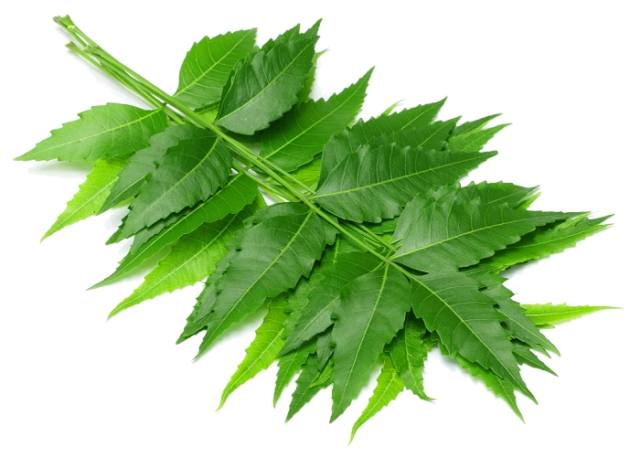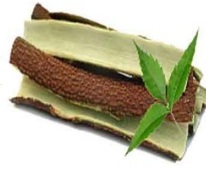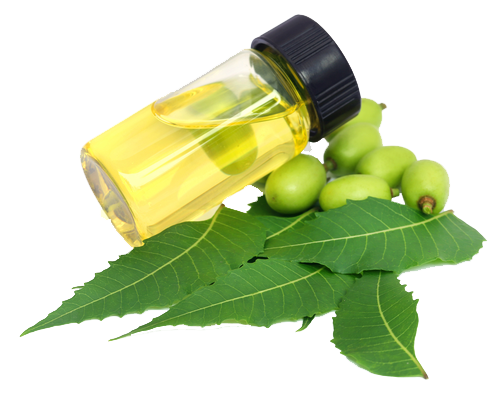Neem (Azadirachta indica), a member of the Meliaceae family, commonly found in India, Pakistan, Bangladesh, and Nepal, has therapeutics implication in diseases cure and formulation based on the fact that neem is also used to treat various diseases.
Common name
Neem, Indian lilac, Margosa, Nimtree [English]; Margousier, Margosier, Neem [French]; Nim, Margosa, Lila India [Spanish]; Amargosa [Portuguese]; Niembaum [German]; Mimba [Indonesian]; Mwarobaini [Kiswahili]; Sầu đâu [Vietnamese]
Active Constituents
Azadirachtin, Nimbolinin, Nimbin, Nimbidin, Nimbidol, Sodium nimbinate, Gedunin, Salannin, ß-sitosterol and Quercetin
Morphology and utilization
Neem is a medium-sized tree, reaching 15 to 30 m in height, with a large rounded crown up to 10-20 m in diameter. The leaves are alternate, petiolated, clustered at the end of the branches, unequally pinnate, glabrous and dark glossy green at maturity. The flowers are numerous, fragrant, white and borne in large clusters. Neem fruit have a thin epicarp, a mucilaginous fleshy mesocarp and a hard endocarp. They contain a variable number of ovoid (1-2 cm) oil seeds.
Neem is a multipurpose tree. Neem leaves, bark and seed extracts have been used for centuries in India in ethnomedicine and ethnoveterinary medicine. The seeds are an important source of Azadirachtin, a limonoid compound (triterpenoid) present in the seeds, and also to some extent in leaves and other tissues. It acts as an insect repellent, inhibiting them from feeding, thus disrupting their growth, metamorphosis and reproduction. Nimbin and Nimbindin (the latter a bitter compound present in the seed at 2%) were reported to have antiviral activity. The oil extracted from the seeds has industrial uses and is widely used in ethnomedicine in India
Process of extraction
Because of the toxicity of neem seed cake, many processes have been investigated since the 1970s to reduce its antinutritional effects on livestock. Water washing, methanol extraction, urea and alkali treatments have all shown promising results. However, the standardization of those techniques, their economic feasibility and the effect of such processes in meat, egg and dairy products have not yet been thoroughly investigated
10 Pharmacological properties Of Neem

- Antimicrobial– Neem and its ingredients play role in the inhibition of growth of numerous microbes & have potent Antibacterial, Antiviral, Antimalarial & Antifungal activities. Plant’s parts show antimicrobial role through an inhibitory effect on microbial growth/potentiality of cell wall breakdown.
- Antioxidant– Its plays role as free radical scavenging properties due to rich source of antioxidant. Azadirachtin and Nimbolide showed concentration-dependent antiradical scavenging activity and reductive potential in the following order: Nimbolide > Azadirachtin > Ascorbate. Leaf aqueous extract, flower, stem & bark extracts showed higher free radical scavenging effect

- Anticancerous– Neem ingredient (Flavonoids) shows effective role in the management of cancer through the regulation of cell signaling pathways. It modulates the activity of various tumor suppressor genes, angiogenesis, transcription factors, and apoptosis
- Anti-inflammatory– It also plays role as anti-inflammatory via regulation of proinflammatory enzyme activities including cyclooxygenase (COX), and lipoxygenase (LOX) enzyme
- Hepatoprotective– Leaf extract significantly prevented changes in the serum levels of Bilirubin, Protein, Alanine Aminotransferase, Aspartate Aminotransferase, and Alkaline Phosphatase and significantly prevented the histological changes
- Wound healing effect– Leaves extracts ofAzadirachta indica promote wound healing activity through increased inflammatory response and neovascularization
- Antidiabetic-Leaf extracts shows hypoglycemic action, shows a good oral glucose tolerance and significantly reduces the intestinal glucosidase activity

- Immunomodulatory and Growth Promoting Effect– Various studies showed neem leaves infusion on broiler chicks improves antibody titer, growth performance & enhances humoral and cell mediated immune response.
- Neuroprotective– Antioxidant compounds in Neem help to prevent brain damages, by enhancing lipid peroxidation and increasing ascorbic acid (Vitamin C) in the brain.

- Nephroprotective– Leaves extract Azadirachta indica effectively rescues the kidney from various medications like Cisplastin mediated oxidative damage .


